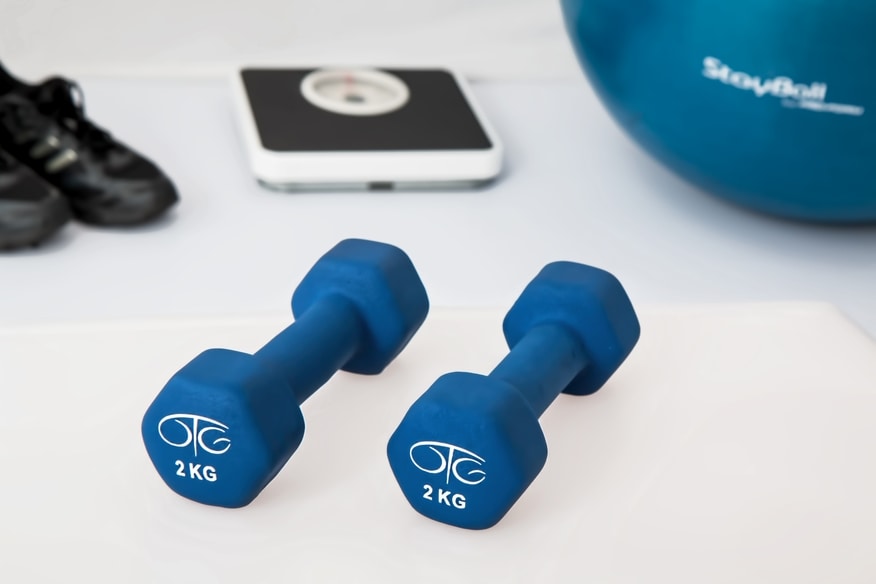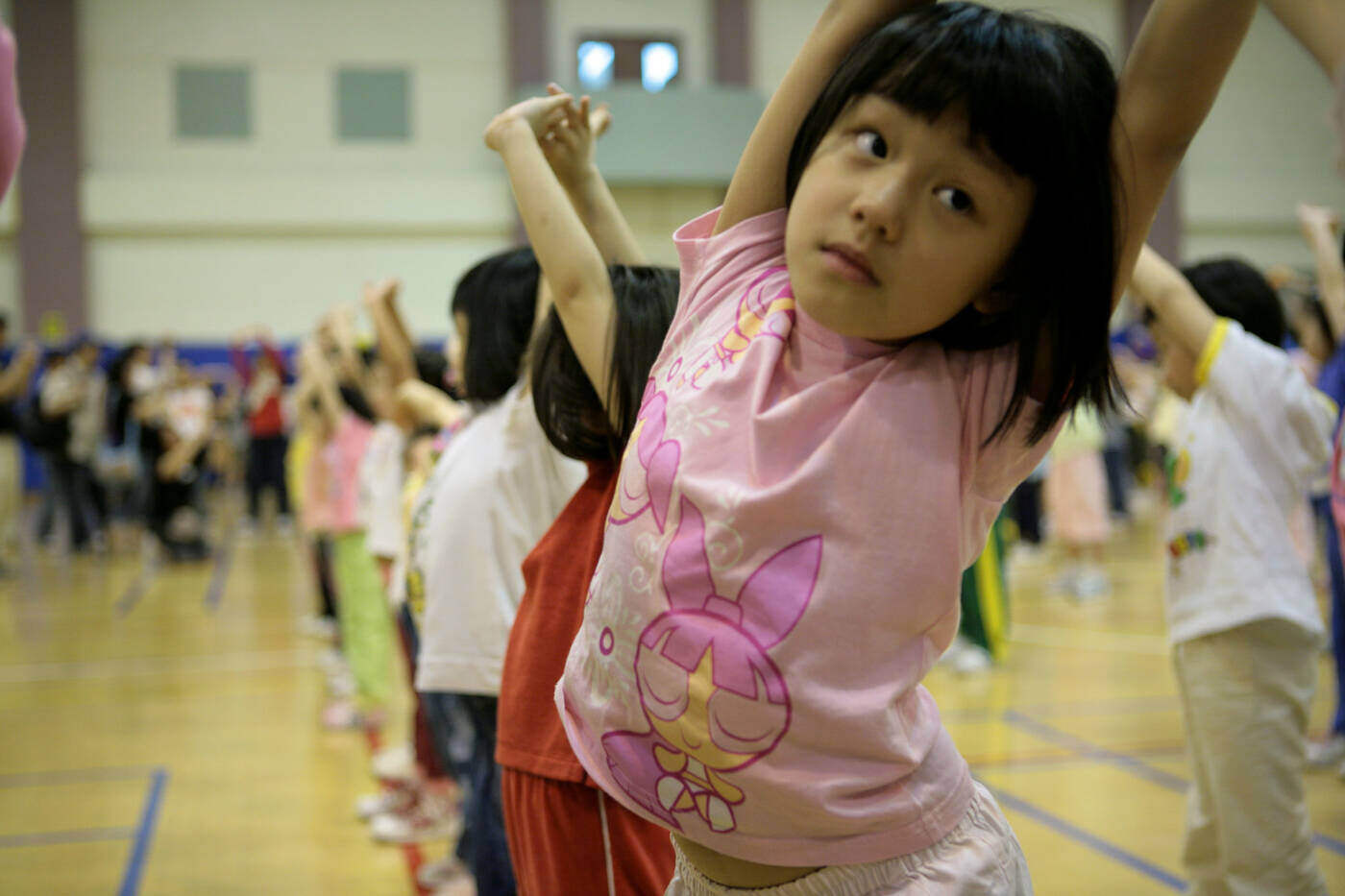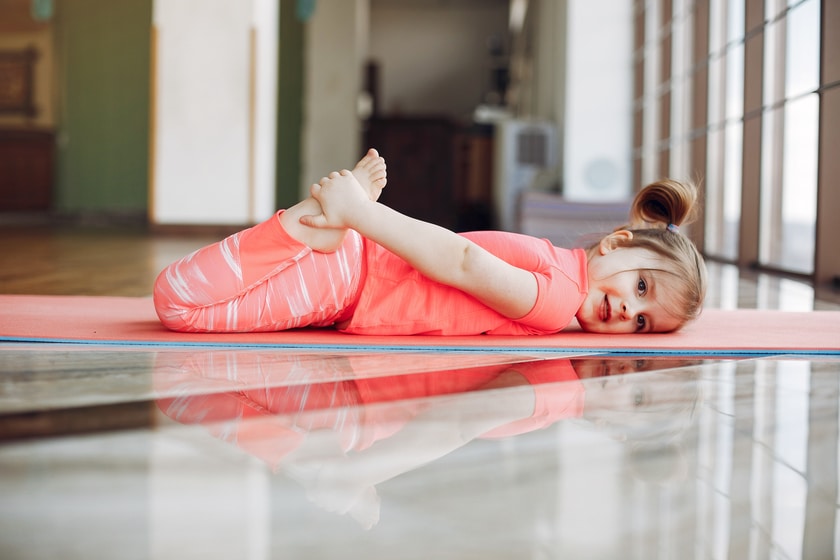What exercise is best for your child? The answer is, whatever exercise they like best!
Favourite physical activities might be part of the school setting during extracurricular activities, or they might be played at home where parents and/or grandparents can take part as leaders and coaches.
It’s important for adults to play an accepting and encouraging role in order to lead kids towards a healthier lifestyle.
In this article, For Kids will illustrate many different types of exercises for kids and how to perform them in a simple way.
These exercises for kids can be used in kids’ fitness classes, kids’ fitness camps, birthday parties and in-school sessions.
Some may seem silly or too easy for adults, but remember, these exercises are ideal for small kids! They’ve been designed for their muscles, skill level and co-ordination level.
You may also be interested in: 25 Benefits of exercise for kids & Average daily time needed
Why these exercises were chosen
When it comes to fitness, children aren’t miniature adults. Children have specific physiological differences from adults that make them unique.
Therefore, their fitness programs, exercises and activities must be specific to their developmental stage and not just watered-down versions of an adult’s.
For example, children of this age don’t necessarily need exercises for building tight abdominal muscles or increasing the size of their biceps.
The exercises in this article were specifically chosen because they’re safe for most kids.
They will also challenge children’s minds and bodies in fun and creative ways, while helping them develop muscular and cardiovascular strength and endurance.
For added fun, you can turn these exercises into playful competitions and/or challenges.
Playful competition challenges kids to work harder against themselves or other players.
Competition also involves skill development and an increased level of focus. It challenges kids to think smarter by developing creative strategies and tactics for success.
General rules of training
1. Safety comes first
Safety should be the number one concern when exercising with kids (adults, too, for that matter).
2. Start with a warm up
Prior to doing any of the following exercises, you should have participants do exercises that gradually elevate their body temperature and heart rate, and loosen up their muscles for the workout ahead.
3. Increase exercise time gradually
Over time, gradually increase the amount of time the children exercise for.
4. Perform each exercise slowly
When children are learning a new exercise, or perhaps coming back from an illness, it’s important that they perform each exercise slowly.
If they perform an exercise too quickly, they’ll use too much momentum and not enough muscular strength.
By taking an exercise slowly, children are less likely to experience injuries, too.
5. Do stretching exercises every day
Teach children to ease into each stretch slowly until they feel the muscles and connective tissues being stretched.
They should then hold the stretch for a slow count of 15 and remember to breathe while doing so.
6. Vary the exercises for kids
To avoid boredom and to challenge the bodies of the children, change the exercises every four weeks.
7. Practice proper alignment
Show the children the proper alignment for each stretching exercise, including:
- Maintaining a neutral alignment of the spine
- Keeping the belly button pulled back towards the spine
- Keeping the head aligned with the spine
Remind all participants to breathe throughout each exercise.
Recommended fitness equipment for kids

- Basketball hoop
- Jump ropes
- Tennis racquets
- Yoga mats
- Exercise balls
- Cones
- Golf clubs
- Towels
- Free weights
- Tubes
26 stretching and flexibility exercises for kids
At this young age, children are typically flexible. But even with their flexibility, it’s extremely important to warm up the muscles they’ll be using before any exercise.
Stretching reduces the chances of injury and establishes a good muscular foundation before any physical activity.
1. Neck Stretch
Steps:
- Sit or stand with your chin slightly tucked into your chest.
- Turn your head slowly to bring your chin to one shoulder, hold for three seconds and then turn to the other shoulder.
- Repeat this stretch five times and breathe throughout.
2. Shoulder Rolls
Steps:
- Rotate your shoulders in as big a circle as you can, five times in one direction.
- Reverse the direction of the rolls and rotate your shoulders five times.
3. Shoulder-Blade Roll
Steps:
- With your elbows bent behind your body, roll your shoulders back until the shoulder blades come as close together as possible.
- Press your shoulder blades together for five breaths. Repeat this motion 10 times.
4. Arm Circles
Steps:
- Stretch your arms out to your sides at shoulder height.
- Begin circling the arms in one direction 10 times, and then reverse direction for 10 more circles. Create both big and small circles as you do so.
5. Hug Yourself
Steps:
- Wrap your arms around your body and give yourself a big hug. This is great to do every day!
6. Shoulder Shrugs
Steps:
- Inhale and lift your shoulders up towards your ears.
- Exhale and slowly lower your shoulders back down.
- Repeat this two-step movement 10 times and then alternate shoulders, raising one at a time.
7. Superman Stretch
Steps:
- In a standing position, place your hands on your hips and pull your shoulders back as far as they will go.
- Keeping your shoulders pressed down, you should notice that you feel a stretch in your chest.
- Hold this stretch for 15 seconds.
8. Fold Yourself in Half
Steps:
- From a standing position, bend forward and try to touch your toes. You’ll feel this stretch in the back of your legs.
- Hold this stretch for 15 seconds.
9. Cat and Cow
Steps:
- Stand with your feet hip-width apart.
- Bend forward and place your hands right above your knees.
- Round your back upward towards the sky and pull your belly button in towards your spine.
- Count to 15 and release, letting your body sag slightly to stretch in the opposite direction.
10. Overhead Arms

Steps:
- In a standing position, extend your arms up and over your head, holding your hands together.
- Hold this stretch for 15 seconds.
11. Back Stretch
Steps:
- Beginning in a standing position and then bending at the waist, slowly roll your back down from the bottom to the top of your spine, all the way until you reach your tailbone.
- Hold this position for 15 seconds, allowing your arms to hang in front of you.
- Slowly roll back up into a standing position.
12. Butterfly Wings
Steps:
- Sitting on the floor with your knees together, place both hands around your ankles.
- Slowly lower your knees out to the sides, as far as they can go, and hold the position for 15 seconds.
- As you breathe, slowly bring your knees back together.
13. Smell Your Stinky Toes
Steps:
- In a seated position with your knees pointing out to each side, bring the bottoms of your feet together.
- Hold both feet with your hands and lean over from the waist, trying to touch your nose to your toes.
- Hold your feet and breathe for a few seconds.
- Repeat this exercise five times.
14. Knee to Chest
Steps:
- Lie on your back, with both feet flat on the floor.
- Bring your left knee into your chest and give it a hug.
- Hold, breathe and count to 15.
- Return the left leg to the floor and repeat the stretch with the right leg.
You may also want to check out 30 Muscle Strengthening Exercises for kids.
15. Walk on Heels
This is a great exercise for stretching the calf muscles and for practicing balance.
Steps:
- Begin walking on the heels of your feet. Walk this way for 30 seconds.
16. Walk on Toes
Steps:
- In a standing position, raise yourself up onto your toes, with your heels lifted off the floor and walk around for 30 seconds.
17. Ankle Circles
Props: A chair or a mat for each participant
Steps:
- Sit on a chair or lie on your back on the floor.
- Bring your right knee up towards your chest.
- Circle the ankle to the right and then to the left.
- Lower this leg and repeat the movement with the other ankle.
18. Swan Stretch
Steps:
- Kneel on the ground and sit back on your heels, while keeping your back straight.
- Lean back, bringing your arms forward to help with balance. Hold this position.
- Reverse the position by bringing your upper body forward and extending your arms straight out behind your back.
- Hold the new position and breathe.
19. Inner-Thigh Stretch
Steps:
- Stand with your feet about two or three feet apart, with your toes facing forward.
- Bend your left knee, making sure it doesn’t move forward beyond your left toes.
- Rotate your pelvis slightly to the left, to increase the stretch for your right inner thigh.
- Feel the stretch in the inner thigh and hold it for 15 seconds.
- Switch legs and repeat the stretch on the left inner thigh.
20. Upright-Spine Twists
Props: A chair or a mat for each participant
Steps:
- Ensure that you’re in a seated position. Lengthen your spine as much as possible by sitting up straight.
- Keeping your hips straight ahead and your arms folded across your chest, rotate your right shoulder back as far as you can without moving your hips. Allow your head to follow.
- Breathe and hold this position for 15 seconds.
- Return to the centre and take 5 deep breaths.
- Rotate your left shoulder and head to the left side, breathe and hold.
- Repeat this sequence three times.
21. Spinal Twists
Steps:
- Lie on your back with your arms at your sides, your feet flat on the floor and your knees together.
- Slowly drop your knees to your left side, while keeping your shoulders on the floor.
- Hold this position for 15 seconds and then bring your knees back to centre.
- Slowly drop your knees to your right side, breathe and hold this position for 15 seconds.
22. Full-Body Stretch
This is a great stretch to do before you jump out of bed in the morning!
Steps:
- Lie on your back with your legs straight.
- Stretch both arms overhead for 15 seconds.
- Pretend that someone is pulling your arms in one direction and your feet in the opposite direction.
23. Quadriceps Stretch
Props: A wall or a chair for each participant
Steps:
- In a standing position, hold onto a wall or chair with your left arm
- Grab your right ankle with your right hand, and bring your heel towards your bottom.
- Hold the stretch, feeling it in the front of the thigh, for 15 seconds.
- Repeat this stretch by using your other leg and arm.
24. Chest Stretch
The following stretch must be done with the help of a partner, so divide the group into pairs or have the players choose partners.
Steps:
- Partners must stand facing away from each other, with the same foot forward and the same foot back.
- Both partners must extend their arms behind their bodies and grab onto each other’s hands.
- Next, each partner should breathe and bend their front knee forward slightly so that they’re each leaning away from the other.
- Both partners should hold the stretch for 15 seconds and repeat it three times.
25. Straddle Stretch
The following stretch is also done with the help of a partner, so once again, divide the group into pairs or have the players choose partners.
Steps:
- Partners must sit, facing each other, with their legs spread apart in a straddle position.
- Both partners must lean forward to grab each other’s hands.
- One partner should place their feet on the inside of the other partner’s leg.
- The second partner should lean back to pull the first one forward, bending so the first partner’s arms straighten out.
- Both partners must hold this position for 15 seconds and repeat the exercise three times before switching roles.
26. Supported Cat
The following stretch must also be completed with the help of a partner. You can select each child’s partner or allow the children to choose their own pairs.
Steps:
- One partner must start on all fours.
- The other partner must stand, with their legs straddling the first partner’s legs.
- The standing partner must then place their hands under the other partner’s waist.
- The partner on all fours must round their back upward and lowers their head, while letting the standing partner pull them up a little more.
- Each pair should hold their position for 15 seconds and repeat the exercise three times before the partners switch roles.
image 1: freepik.com; image 2: freepik.com; image 3: Tommy Wong

